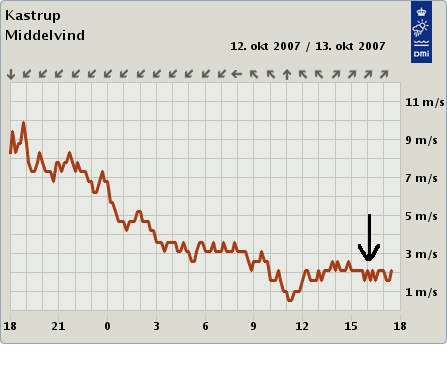Little Dragon in flight, bottom view.
This kite was inspired by JC's beautiful Nasagul design. JC's kite looks much like a dragon - the name "Nasagul" came from a combination of Tolkien's "Winged Nazgul" dragon-like creatures, and the kite being similar to a NASA parawing. My imitation of JC's work is called Little Dragon.
The first iteration of this design had some trouble flying. My attempt to remedy this is to make a simple bridle for the front portion of the kite. This is implemented using sewn-in tabs and an adjustable (prusik knot) cascade bridle.
The bridle tabs are created by fixing a bridle end into a section of ripstop edge binding. The edge binding is folded at an angle to make it wide at the bottom. Tab construction uses 3M's 9460PC resin transfer adhesive tape instead of sewing. This 3M tape has some amazing properties: properly prepared joins can actually be stronger than sewing.
The first two pictures show how the tape is laid out and includes the paper backing. Removing the backing leaves only the resin adhesive. Folding and ironing produces a tab which is an integrated structure. The corners near the line could be trimmed off to give a neater appearance.
Testing day arrives, beautiful sunshine but only a puff of wind at the beach. Fortunately, single skin designs need very little wind because of their low weight to area ratio. The only other kite flying on the beach was a Flysurfer. Silver Arrow's cost more than my last car - I don't think I will be getting one anytime soon. :-)

This view shows a couple of major flaws with this iteration:
- Nose folds causing inflation opening to be partially blocked.
- Tip lines are too 'low' creating tip flare and exacerbating the nose fold problem.
Nose Fold
Look at the top of the kite and you can see only small part of the tube opening available for inflation as the canopy fabric folds over the rest. The nose folded more than this in first iteration of the design. The bridle was added to control the tube shape near the nose. It did help 'open up' the nose area, but the top part of the opening is still blocked. Nose folding is caused by two things:- A tighter radius curve in the front section of the wing where the root of the wing is joined to the tube body.
- Wings 'too open' (indicating high AOA) because of 'low' rear line placement.
Rear Line Placement
There is a tradeoff when choosing the LE/TE ratio (determining how 'low' to make the rear pigtails) for a kite like this. I wanted to make the LE/TE ratio a little higher so that the front line tension could be greater to help keep the leading edge of the tube fabric tube taunt.In all previous bridleless NPWC designs, the tension on the front lines is much less than the tension on the rear lines. This is opposite to most kites where the front lines take most of the load. In strong winds, the front lines will 'bow' more than the rears, effectively shortening them and reducing the AOA. This is a nice effect: automatic depower during gusts, but it can cause nose collapse if the kite is already close to minimum AOA.
I picture the reduced front line tension configuration as similar to a canard airplane (instead of one which has a standard rear mounted elevator). One drawback to this setup in a kite is due to rear lines being used for steering. The most heavily loaded lines are the ones used for steering.
Comparison
The Foilnose2 has the chambers on the back of the skin. This design has the chamber on the front of the skin. Normally, a chamber on the front of the skin is harder to keep inflated because the bottom of the opening can buckle in.Line with chamber on bottom is synergistic in this application because the combination serves multiple purposes:
- Line keeps front of chamber open.
- Chamber walls act as a load curtain distributing the single point line load across a larger section of the skin.
Future
This design was actually started before the Foilnose2. I have had positive results with cells which do not run the full length of the kite during the development of Foilnose2, so a partial cell would be a natural thing to try with another iteration of this design.A few more iterations and I might have something which flys well.